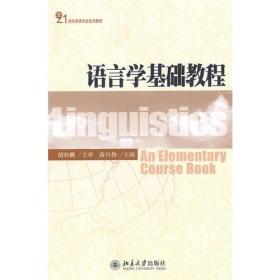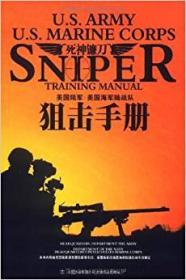
语言学基础教程
下午5点前订单,当日发货!超时赔付
¥ 6.47 2.0折 ¥ 32 九五品
仅1件
四川成都
认证卖家担保交易快速发货售后保障
作者苗兴伟 主编
出版社北京大学出版社
出版时间2010-07
版次1
装帧平装
货号9787301138397013
上书时间2024-11-18
- 最新上架
商品详情
- 品相描述:九五品
图书标准信息
- 作者 苗兴伟 主编
- 出版社 北京大学出版社
- 出版时间 2010-07
- 版次 1
- ISBN 9787301138397
- 定价 32.00元
- 装帧 平装
- 开本 16开
- 纸张 胶版纸
- 页数 238页
- 【内容简介】
- 《语言学基础教程》包括语言与语言学、语音学与音位学、形态学、句法学、语义学、语用学、语篇分析、历史语言学、文体学、社会语言学、跨文化交际、心理语言学、认知语言学、应用语言学等十四章。在内容方面,本书在提供基本知识的同时,更注重教材的科学性、系统性、实用性和时代性。在编写过程中,我们力求“化难为简”,尽量做到概念清晰,既要保证知识的系统性,又要避免术语的堆砌。本书在传授基本知识与概念的同时,通过丰富的实例提供了有关语言分析和描述的基本方法,并强调语言学与其他学科的联系,以便适应创新型人才培养的需要。
- 【目录】
-
Chapter 1 Language and Linguistics
1.1 What is language?
1.2 The design features of language
1.3 The origin of language
1.4 What is linguistics?
1.5 The scope of linguistics
1.6 A brief history of linguistics
1.6.1 Saussure as the father of modern linguistics
1.6.2 American structuralism
1.6.3 Generative linguistics
1.6.4 Functional linguistics
Questions and Exercises
Chapter 2 Phonetics and Phonology: The Sounds and Sound Patterns of Language
2.1 Introduction
2.2 Phonetics
2.2.1 Speech organs
2.2.2 Consonants
2.2.3 Vowels
2.2.4 Transcription of speech sounds
2.3 Phonology
2.3.1 Phoneme
2.3.2 Phone and allophone
2.3.3 Phonotacties
2.3.4 Prosodic features: stress, tone and intonation
2.3.5 Co-articulation effects
2.4 Summary
Questions and Exercises
Chapter 3 Morphology: The Word Structure of Language
3.1 Introduction
3.2 The words of language
3.3 The structure of words
3.4 Morpheme, morph and allomorph
3.5 Classification of morphemes
3.5.1 Free morphemes and bound morphemes
3.5.2 Roots and affixes
3.5.3 Inflectional morphemes and derivational morphemes
3.6 Word formation processes
3.6.1 Derivation
3.6.2 Compounding
3.6.3 Conversion
3.6.4 Blending
3.6.5 Backformation
3.6.6 Abbreviation or shortening
3.7 Summary
Questions and Exercises
Chapter 4 Syntax: The Sentence Structure of Language
4.1 Introduction
4.2 Sentence structure
4.2.1 Definition of sentence
4.2.2 The linear structure of sentence
4.2.3 The hierarchical structure of sentence
4.3 The traditional approach
4.4 The structural approach
4.4.1 Immediate constituent analysis
4.4.2 Endocentric and exocentric constructions
4.5 The transformational-generative approach
4.5.1 The TG model of grammar
4.5.2 Syntactic structure
4.5.3 Movement
4.6 The functional approach
4.6.1 Functions of language
4.6.2 Functional analysis of syntactic structure
4.7 Summary
Questions and Exercises
Chapter 5 Semantics: The Meaning of Language
5.1 Introduction
5.2 Approaches to meaning
5.3 Sense and reference
5.4 Word meaning
5.4.1 Grammatical meaning and lexical meaning
5.4.2 Classification of lexical meaning
5.4.3 Sense relations
5.4.4 Semantic field
5.5 Sentence meaning
5.5.1 Definition of sentence meaning
5.5.2 Semantic relations at the sentential level
5.6 Ambiguity
5.7 Semantic analysis
5.7.1 Componential Analysis
5.7.2 Predication Analysis
Questions and Exercises
Chapter 6 Pragmatics: The Use of Language in Context
6.1 Introduction
6.2 Pragmatics as a new branch of linguistics
6.2.1 Defining pragmatics
6.2.2 Syntax, semantics and pragmatics
6.3 Speech Act Theory
6.3.1 Constatives and performatives
6.3.2 Locution, illocution, and perlocution
6.3.3 Felicity conditions
6.3.4 Classification of speech acts
6.4 Theory of conversational implicature
6.4.1 The notion of implicature
6.4.2 Cooperative Principle and its maxims
6.4.3 Flouting the maxims
6.5 Politeness Principle
6.5.1 Politeness: The principle and the maxims
6.5.2 Clashes between the maxims
6.6 Summary
Questions and Exercises
Chapter 7 Discourse Analysis: Language above the Sentence
7.1 Introduction
7.2 What is discourse analysis?
7.3 Cohesion
7.3.1 Reference
7.3.2 Substitution
7.3.3 Ellipsis
7.3.4 Conjunction
7.3.5 Lexical cohesion
7.4 Coherence
7.5 The structure of discourse
7.5.1 Thematic structure and information structure
7.5.2 The structure of conversations
7.5.3 Patterns in written discourse
7.6 Connections
Questions and Exercises
Chapter 8 Historical Linguistics: Language through Time
8.1 Introduction
8.2 When language changes
8.3 How language changes
8.3.1 Phonological change
8.3.2 Lexical change
8.3.3 Grammatical change
8.4 Why language changes
8.4.1 External causes
8.4.2 Internal causes
8.5 Summary
Questions and Exercises
Chapter 9 Stylistics: Language and Literature
9.1 Introduction
9.2 Important views on style
9.2.1 Style as deviation
9.2.2 Style as choice
9.2.3 Style as foregrounding
9.3 Stylistic analysis
9.3.1 Phonological analysis
9.3.2 Graphological analysis
9.3.3 Lexical analysis
9.3.4 Syntactic analysis
9.3.5 Semantic analysis
9.3.6 Pragmatic analysis
Questions and Exercises
Chapter 10 Sociolinguistics: Language and Society
10.1 Introduction
10.2 The relations between language and society
10.3 Speech community and speech variety
10.4 Dialect
10.4.1 Regional dialect
10.4.2 Social dialect
10.4.3 Standard dialect
10.5 Register
10.6 Language contact and contact languages
10.6.1 Lingua franca
10.6.2 Pidgin
10.6.3 Creole
10.7 Choosing a code
10.7.1 Diglossia
10.7.2 Bilingualism
10.7.3 Code-switching
Questions and Exercises
Chapter 11 Intercultural Communication: Language and Culture
11.1 Introduction
11.2 Definitions of culture
11.3 The relationship between language and culture
11.4 Naming the world through language
11.4.1 Color terms
11.4.2 Kinship terms
11.4.3 Culture-loaded words
11.5 Communicative patterns across cultures
11.5.1 Address forms
11.5.2 Greetings
11.5.3 Giving and accepting compliments
11.5.4 High context versus low context
11.6 Language and thought: Sapir-Whorf hypothesis
11.7 Intercultural communication
11.7.1 Intercultural communication as a field of research
11.7.2 Conquering obstacles in intercultural communication
11.7.3 Value dimensions
11.8 Summary
Questions and Exercises
Chapter 12 Psycholinguistics: Language and Psychology
12.1 Introduction
12.2 Language and the brain: The biological foundations of language
12.2.1 Cerebral lateralization and language functions
12.2.2 Evidence of lateralization
12.3 Language comprehension
12.3.1 Human information processing system
12.3.2 The mental lexicon
12.3.3 Sentence comprehension
12.3.4 Discourse comprehension
12.4 Language production
12.5 Language acquisition
12.5.1 First language, second language and foreign language
12.5.2 First language acquisition
12.5.3 Second language acquisition
Questions and Exercises
Chapter 13 Cognitive Linguistics: Language and Cognition
13.1 Introduction
13.2 Categories and categorization
13.3 Conceptual metaphors
13.4 Conceptual metonymies
13.5 Image schemas
13.6 Iconicity
13.6.1 Iconicity of order
13.6.2 Iconicity of distance
13.6.3 Iconicity of complexity
Questions and Exercises
Chapter 14 Applied Linguistics: Language Teaching and Learning
14.1 Introduction
14.2 How is language learned?
14.2.1 Behaviorism
14.2.2 The innateness hypothesis: universal grammar
14.2.3 Interlanguage theory
14.2.4 The input hypothesis
14.2.5 The output hypothesis
14.3 Individual differences in language learning
14.3.1 Language aptitude
14.3.2 Learning style
14.3.3 Motivation
14.3.4 Anxiety
14.3.5 Learning strategies
14.4 Approaches and methods in foreign language teaching
14.4.1 The Grammar-Translation Method
14.4.2 The Direct Method
14.4.3 The Audiolingual Method
14.4.4 The Communicative Approach
14.4.5 The Task-based Approach
14.5 Language Testing
14.5.1 Types of test
14.5.2 Qualities of a good test
Questions and Exercises
References
Glossary
点击展开
点击收起
相关推荐
— 没有更多了 —


















以下为对购买帮助不大的评价